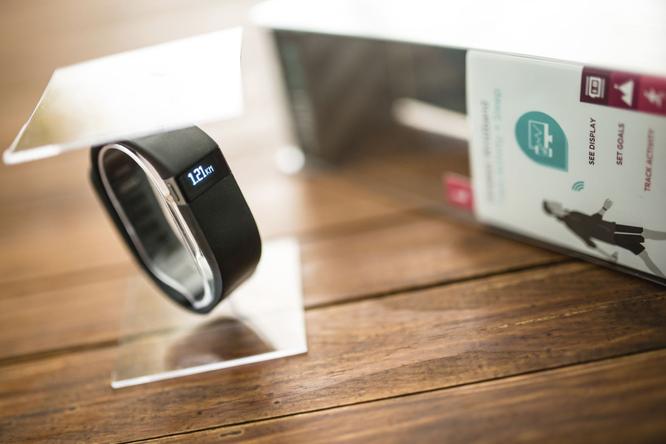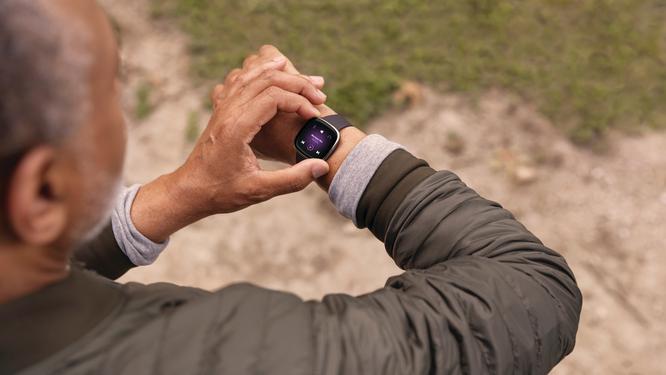
By cuterose
8 Ways You're Using Your Fitness Tracker Wrong
Fitness trackers guilt you into walking, sweating, standing, and actually thinking about all of the above more. You don't ask it for anything — except accuracy. So shouldn't it deliver?
The answer is yes, unless you are the one who's messing up your tracker's math. So avoid these major mistakes to help your fitness tracker get it right:
1. You wear it on your wrist when you run. Fitness devices deliver different step counts depending on which part of your body you attach them to. In a study recently published in Medicine and Science in Sports and Exercise, participants wore both a wrist and waist device during a treadmill walk/run, then compared how many steps were detected. On the treadmill, the wristbands consistently counted fewer steps than the waist trackers. To count every step you painstakingly took, clip your device to your waistband the next time you take a run. (It's not as uncomfortable as you'd think.)
2. You wear it on your waist throughout the day. In the same Medicine & Science study, participants wore a wrist and waist tracker during casual activities throughout the day. During free movement, the wristbands detected more steps than the trackers people wore at their waists. Wear your tracker on your wrist to ensure accuracy before and after scheduled workouts (and make step counting easier when you wear a dress without a waistband).

3. You wear it for activities that fitness trackers aren't meant to measure. Leave your tracker on the nightstand during sex, biking, and swimming. Any water sport will probably drown the thing if it's not waterproof, like most devices. Other activities will just make your device rack up steps you didn't take.
4. You never calibrated it. While fitness trackers do some *~mAgIcAl~* things, they don't guess the length of your stride, a measure that's absolutely vital for counting steps accurately. That's because stride length varies with leg length, speed, and incline of the surface you run or walk on. So unless you live in the Great Plains, move through life at the exact same pace, or tell your device every time you speed up or slow down, it's not going to be 100 percent accurate. Because you spend most of your time walking, not running, use your regular walking pace to estimate your stride. To do so, use Google Maps to get directions between two corners. It will spew out an exact measurement of the block's length in feet. Then walk that distance and manually count the number of steps between the two points.Divide the number of feet you traveled by the number of steps you took. That number is your stride. Input it into your device or device's dashboard.
5. You wear it on the wrist of your dominant hand — without telling it. Some trackers (like those made by Fitbit) have a special setting that reduces sensitivity if you wear it on your dominant hand. Why? Compared to your less-dominant hand, it generally moves more — even when your feet don't. If you use a device that's less fancy, just wear it on your less-dominant wrist or clip it on the same side every time you use it. (The side shouldn't matter. Just be consistent.)
6. You walk sooo sloooowlyyyy. In a 2012 study, 56 people wore six different activity monitors and compared the number of steps detected at different walking speeds under free-living conditions (aka, off the treadmill). When the walkers moved slower than about 2.5 miles per hour, the trackersdetected fewer steps. No wonder the effort didn't register: The average street-walking pace is about 3.3 miles per hour, while 2.5 miles per hour is the pace at which you might walk down a grocery store's cereal aisle as you read every box.
7. You don't reset it daily. OMG, you walked 30,000 steps this morning?! No, no, you didn't. (Unless you ran a half marathon and then some.) If your device doesn't automatically reset, do it every morning for a more realistic activity estimate.
8. You walk without a goal. The National Institutes of Health recommends walking about 10,000 steps a day. (FYI: Depending on your stride, 2,000 steps is approximately one mile, so 10,000 steps is about five miles.) If you don't even try to hit that, why bother counting?
Follow Elizabeth on Twitter.
Elizabeth NarinsSenior fitness and health editorElizabeth Narins is a Brooklyn, NY-based writer and a former senior editor at Cosmopolitan.com, where she wrote about fitness, health, and more. This content is created and maintained by a third party, and imported onto this page to help users provide their email addresses. You may be able to find more information about this and similar content at piano.io








